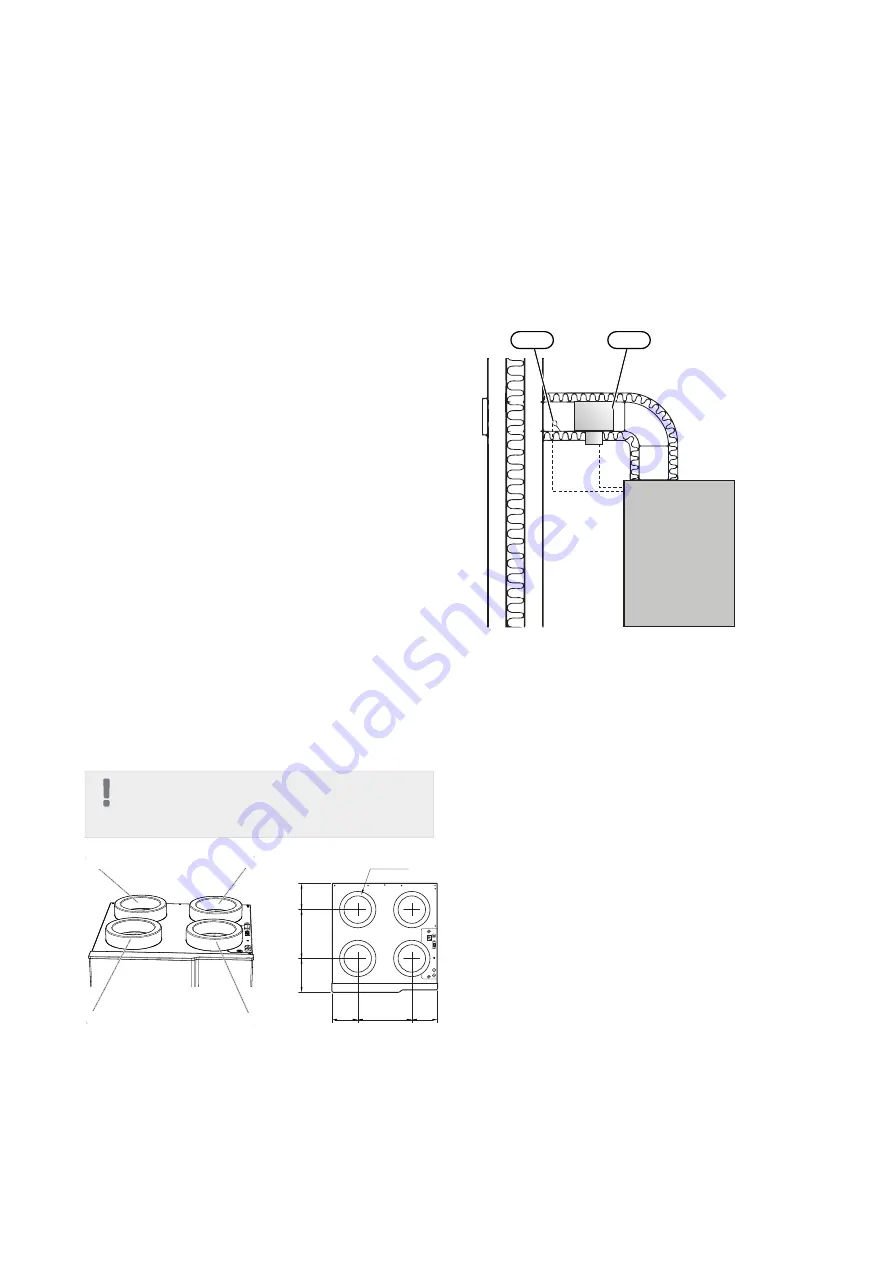
General ventilation connections
Ventilation installation must be carried out in accordance
with current norms and directives.
To prevent fan noise being transferred to the ventilation
devices, install silencers in the ducts. This is especially
important if there are ventilation devices in bedrooms.
The extract air and outdoor air ducts are to be insulated
using diffusion-proof material (PE30) along their entire
lengths. Ensure that the condensation insulation is sealed
at any joints and/or at lead-in nipples, silencers, roof
cowls or similar. Provision must be made for inspection
and cleaning of the duct. Make sure that there are no
reductions in cross-sectional area in the form of creases
etc., since this will reduce the ventilation capacity. The
air duct system must be a minimum of air tightness class
B.
All joins in the ducting must be sealed to prevent leak-
age.
It is recommended that the outdoor air inlet be located
on the north or east side of the house to achieve optimal
comfort in the house.
When positioning the outdoor air and extract air
hood/grille, bear in mind that the two air flows must not
short circuit to prevent the exhaust air from being sucked
in again.
Exhaust air duct /kitchen fan
Exhaust air duct (kitchen fan) must not be connected to
ERS 10.
To prevent cooking odours from being led to the ERS
10, the distance between the kitchen fan and the exhaust
air valve must be observed. The distance must not be
less than 1.5 m, but may vary between different installa-
tions.
Always use a kitchen fan when cooking.
NOTE
A duct in a masonry chimney stack must not be
used for extract air.
900
44
600
4 x Ø160
Ø32
308
146
146
278
188
146
612
Exhaust air
Outdoor air
Extract air
Supply air
Preheating the outdoor air
If the extract air temperature is too low the supply air
fan slows down to prevent the condensation water in
the heat exchanger freezing.
To prevent this from happening too often in areas with
colder climates, an electrical air heater EAH 10 (EB17)
must be installed in the outdoor air duct as illustrated.
This heats the incoming outdoor air so that the extract
air temperature does not fall to the stated level.
EB17
BT23
ERS
The outdoor air sensor (BT23) in ERS 10 must be discon-
nected and replaced with the one supplied with EAH 10.
See the Installation manual for EAH 10 for further instruc-
tions.
Ventilation flow
Connect ERS 10 so that all exhaust air except exhaust
kitchen air (kitchen fan) passes the heat exchanger (EP26)
in the heat pump. The lowest ventilation flow must
comply with the applicable national standards. The
supply air flow must be lower than the exhaust air flow
to prevent over pressure in the house.
Ensure that the ventilation openings are not blocked.
Set the ventilation capacity in the main product's menu
system (menu 5.1.5).
Adjusting ventilation
To obtain the necessary air exchange in every room of
the house, the exhaust air valve and the supply air inlet
as well as the fans in the ventilation heat exchanger must
be correctly positioned and adjusted.
Immediately after installation adjust the ventilation so
that it is set according to the projected value of the
house.
A defective ventilation installation may lead to reduced
installation efficiency and thus poorer operating eco-
nomy, and may result in moisture damage to the house.
11
Chapter 4 |
Pipe and ventilation connections
NIBE™ ERS 10-500












































